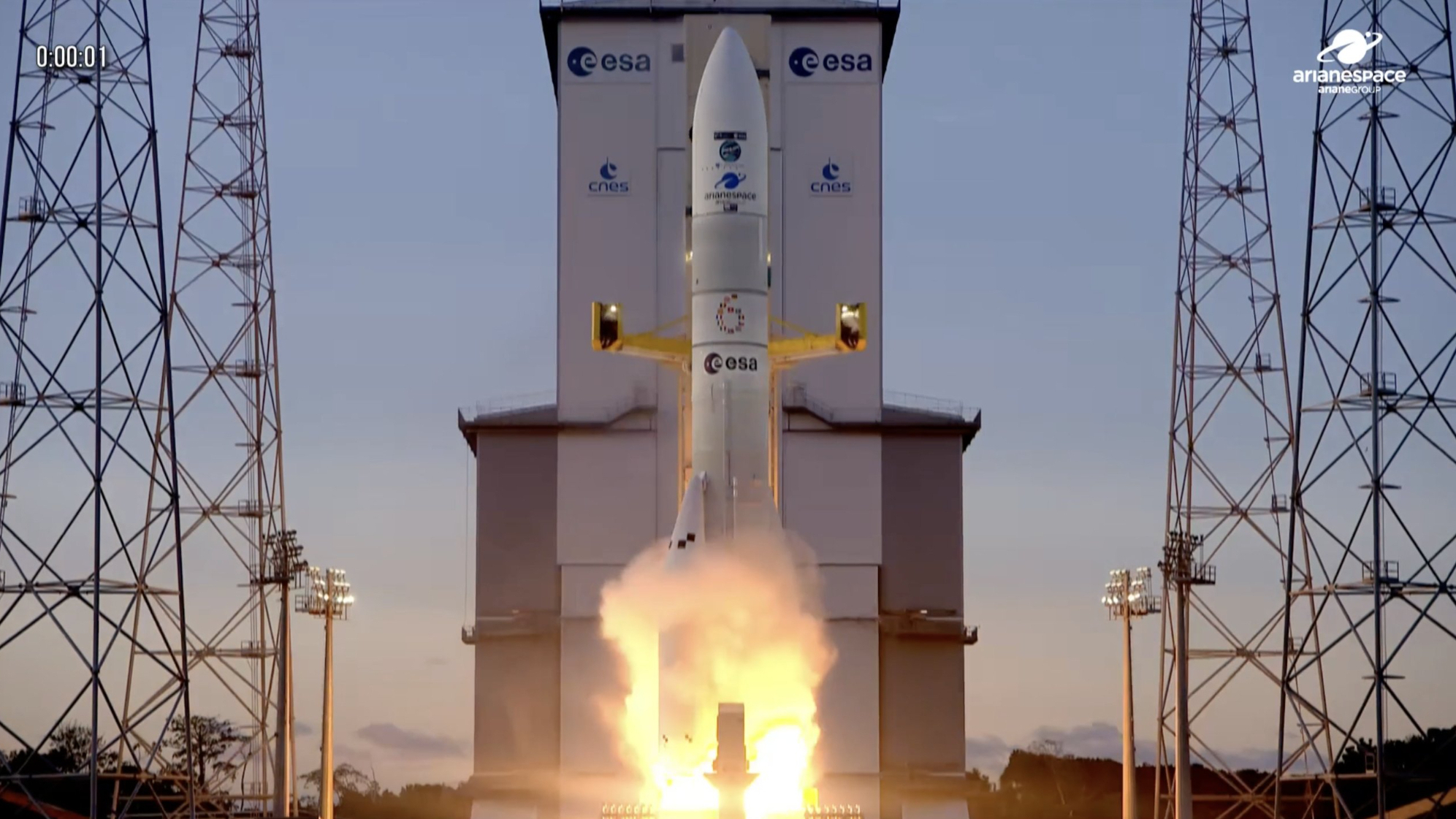
Scientists are widely expected to announce the first-ever direct detection of elusive gravitational waves this morning, and you can watch the big moment live.
Researchers affiliated with the Laser Interferometer Gravitational-Wave Observatory (LIGO) are holding a news conference today (Feb. 11) at 10:30 a.m. EST (1530 GMT) at the National Press Club in Washington, D.C., and you can watch it live here on Space.com, courtesy of the LIGO consortium.
Then, at 1 p.m. EST (1800 GMT), the Perimeter Institute for Theoretical Physics in Ontario, Canada, will host its own webcast about the announcement and its implications. Space.com will carry that event live as well, thanks to the Perimeter Institute. [The Search for Gravitational Waves (Gallery)]
Gravitational waves are ripples in the fabric of space-time generated by the acceleration of massive objects. Their existence was first proposed by Albert Einstein in 1916, as part of his famous theory of general relativity. Scientists have found indirect evidence that gravitational waves exist, but a direct detection has proved elusive — until now, apparently.
Rumors have been swirling for the past several months that the LIGO consortium has spotted gravitational waves — specifically, those generated by the merger of two medium-size black holes. So Thursday’s event is believed to be a discovery announcement, though the LIGO team has remained tight-lipped, referring to the news conference as a "status report on the effort to detect gravitational waves."
Gravitational waves move at the speed of light and do not interact meaningfully with matter. A direct detection would be a huge milestone, allowing researchers to test how general relativity operates under extreme conditions and potentially opening up a new window into the universe, LIGO team members have said.
"Gravitational waves probably won’t be useful in helping us understand processes on the Earth, but they will help us understand processes that occur in outer space, such as the collisions of pairs of black holes," the LIGO team wrote in an online FAQ about the project.
Breaking space news, the latest updates on rocket launches, skywatching events and more!
"The knowledge that astronomers gain from measuring gravitational waves could also improve our understanding of space, time, matter, energy and the interactions between all of these things," they added. "In so doing, this field of study could revolutionize humanity’s knowledge and understanding of the nature of existence itself."
LIGO consists of two huge detectors — one in Livingston, Louisiana, and the other in Hanford, Washington. Each detector is an L-shaped system with arms 2.5 miles (4 kilometers) long. A laser beam is directed down these arms; if a gravitational wave passes through the detector, the resulting distortion of space-time will cause the distance traveled by the beam to change by a minuscule amount.
Theoretically, this change would be picked up by the detector. LIGO has two such detectors spaced hundreds of miles apart to help rule out false positives caused by local environmental conditions. (If the same signal is picked up in both Louisiana and Washington, chances are, it’s a real detection.)
LIGO is operated by MIT and the California Institute of Technology, and is funded by the U.S. National Science Foundation.
Follow Mike Wall on Twitter @michaeldwall and Google+. Follow us @Spacedotcom, Facebook or Google+. Originally published on Space.com.

Michael Wall is a Senior Space Writer with Space.com and joined the team in 2010. He primarily covers exoplanets, spaceflight and military space, but has been known to dabble in the space art beat. His book about the search for alien life, "Out There," was published on Nov. 13, 2018. Before becoming a science writer, Michael worked as a herpetologist and wildlife biologist. He has a Ph.D. in evolutionary biology from the University of Sydney, Australia, a bachelor's degree from the University of Arizona, and a graduate certificate in science writing from the University of California, Santa Cruz. To find out what his latest project is, you can follow Michael on Twitter.
